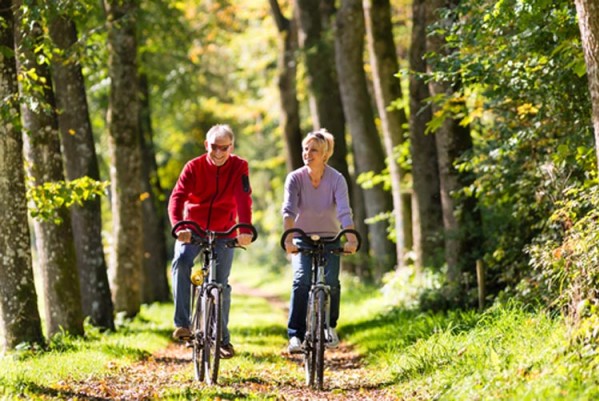
Beat Pain Naturally
 A few weeks ago I ran a half marathon, not with the best conditions. It was rainy, cold, and the course was very hilly. But as an outdoor enthusiast we cannot request the most optimum weather and conditions.
A few weeks ago I ran a half marathon, not with the best conditions. It was rainy, cold, and the course was very hilly. But as an outdoor enthusiast we cannot request the most optimum weather and conditions.
Low back and hip stiffness, and mild foot pain is what I woke up to early the next morning. I figured I would get moving and get back outside so I took a 14 mile bike ride, (moderate distance for me) and at mile 2 the leg heaviness and back pain settled down. “Motion is Lotion, something I explain to my patients every day sure held true. Movement does help you to make peace with your pain.
Pain management is quite the popular treatment course these days. Is it because we baby boomers are trying so desperately to keep young or is the bad connotation that sometimes goes hand-in-hand with it? Pain can be the culprit for loss of work and recreation, depression or even addiction and opioid overuse. Pain that gets in the way of work, relationships, and loss of every day pleasures. Natural pain relief strategies deserve a chance to try to restore the energy back into the life you love to live.
Don’t underestimate the power and often the demise of pain meds. So you have a headache? Back ache? About 35% of Americans use over the counter drugs and many of these medications are analgesics. Recent revelations about the very real cardiac, liver, kidney, bleeding and stroke risks that these popular meds present have led health care providers to refrain their recommendations about how we should use them. Since people can buy these pain meds without a prescription they mistakenly believe that they are completely safe. This simply is not true. Especially if you have other health problems you need to take time to learn about these risks-ask your doctor or pharmacist.
What is safe are the strategies found in physical therapy. Prescribed exercises can work wonders for pain control. No, it’s not as easy as “pop a pill” but the benefits and low risk sure outweigh over the counter and prescribed and potentially addicting drugs. Exercise is proven to help control many types of pain including migraine, fibromyalgia, soft tissue complaints, and chronic pain.
Cardiovascular exercises such as walking, cycling, swimming, and running are examples of cardio that boosts heart and lung fitness, lifts your mood, and helps you to lose weight. Strength training through the use of weights, resistance bands, or your own body weight will help you with balance, muscle toning, and can also help with weight loss.
Stretching not only feels good but is so very important for joint and muscle aches and pains and helps us to stay in good postural alignment.
One West Virginia University study of 90 people with low back pain found a significant drop in their back pain with improved ability to perform daily activities following their participation in Yoga classes several times a week for 6 months.
Physical activity is a healthy option for most types of chronic pain. Start slow, find an activity that can fit your needs. Get stronger, get flexible, feel better.
Questions? Contact one of the Physical therapists at MMI to discuss your options for exercise, or options for hands on skilled manual techniques such as mobilization, myofascial releases or progressive relaxation muscle techniques.
Yes, sure glad I dragged myself out of bed early that morning, put on my shoes, and jumped on my bike for some pain management.